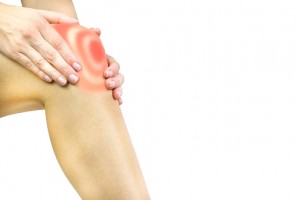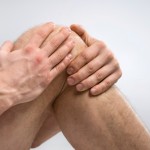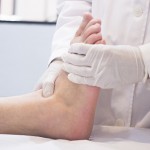

 You may be wondering, What is pseudogout? Well, you probably have heard of gout, the painful condition that commonly affects the large toe. But pseudogout? While it does sound similar, there are some notable differences.
You may be wondering, What is pseudogout? Well, you probably have heard of gout, the painful condition that commonly affects the large toe. But pseudogout? While it does sound similar, there are some notable differences.
Before we outline the differences between gout and pseudogout, let’s further explain pseudogout, to give you a better understanding.
Pseudogout, similar to gout, is an arthritis disease where crystalline deposits form around joints. This formation of crystals can cause pain, swelling, redness and stiffness of the joint. Unlike gout, which is caused by a build-up of purines, pseudogout is caused by calcium pyrophosphate dihydrate.
Episodes of pseudogout pain can be temporary or last for weeks. Unlike gout, which primarily affects small joints like those found in the big toe, pseudogout is commonly found in the knee.
Pseudogout is caused by the presence of calcium pyrophosphate dihydrate. The formation of calcium pyrophosphate dihydrate crystals can increase with age and it affects nearly half of those over the age of 85. However, many individuals who have these crystals never actually develop pseudogout. It is still unclear why symptoms show in some and not in others.
Risk factors of pseudogout include:
 When it comes to symptoms, gout and pseudogout are quite similar. Both conditions cause pain, swelling and warmth in the affected joint. Pseudogout can also cause redness or a purple color on the skin and severe tenderness even to the lightest touch.
When it comes to symptoms, gout and pseudogout are quite similar. Both conditions cause pain, swelling and warmth in the affected joint. Pseudogout can also cause redness or a purple color on the skin and severe tenderness even to the lightest touch.
Both men and women can develop pseudogout, but it is more common for women to experience it. Pseudogout is also more common in individuals over the age of 60 and in people with thyroid conditions, kidney failure and in those who have conditions that affect calcium.
Pseudogout is also common in those with osteoarthritis, which can cause a misdiagnosis if both conditions are present at the same time.
Preventing pseudogout is challenging; many of the risk factors are fixed, such as age or genetic disorders. But there are other risk factors that can be adjusted to prevent pseudogout.
Just like maintaining overall good healthy, it is encouraged to enjoy a healthy diet, exercise and properly diagnose any other medical condition that may be present.
One study even outlined the benefits of consuming coffee and low-fat dairy products in moderation as a means of preventing pseudogout.
 Treatment for pseudogout can range from natural remedies to medical interventions. Treatment options for pseudogout include:
Treatment for pseudogout can range from natural remedies to medical interventions. Treatment options for pseudogout include:
We have mentioned some similarities and some differences between gout and pseudogout. Here we will further outline what the two have in common and also what makes them different conditions.
GOUT PSEUDOGOUT Joint symptoms Arthritic joint pain, swelling, redness, warmth, in some cases development of tophi, acute onset but chronic condition Arthritic joint pain, swelling, redness, warmth, extreme tenderness, acute onset but chronic condition Commonly affected joints Big toe, heels, knees, wrists and fingers First affects the knees but can move to wrists, ankles, shoulders and other joints Length of symptoms Five to 12 days but chronic attacks can be longer Five to 12 days but chronic attacks can be longer Cause Abundance of uric acid Abundance of calcium pyrophosphate dihydrate Diagnosis Imaging tests, fluid drawn from swollen joint, blood test Imaging tests, fluid drawn from swollen joint, blood test Treatment Resting joint, icing, painkillers, target uric acid production or excretion, diet low in purines Resting, icing, painkillers, healthy diet but not strongly associated Prevention Difficult to prevent, exercise, healthy diet, treating other medical problems Difficult to prevent, exercise, healthy diet, treating other medical problems Occurrence Common over the age of 60, common in men, common in those who are obese, in people with kidney problems or hypertension Common over the age of 60, women more common, can occur with other joint disordersGout risk higher with purine-rich foods in diet raising uric acid levels
Gout risk is higher with purine-rich foods as it increases uric acid levels. Purines are a chemical compound found in some foods. Gout is a condition that affects joints and the musculoskeletal system. It is a form of inflammatory arthritis caused by an excess of uric acid. Continue reading…
14 Natural remedies for gout pain relief
Gout pain can be debilitating, so using natural remedies can offer gout suffers much relief. Gout is a condition characterized by a buildup of uric acid. Uric acid is the result of purines breaking down, which are found naturally in the human body as well as in food. Continue reading…
Copyright © www.orthopaedics.win Bone Health All Rights Reserved